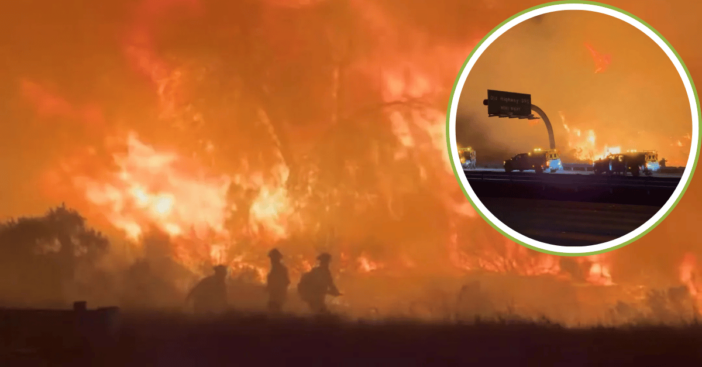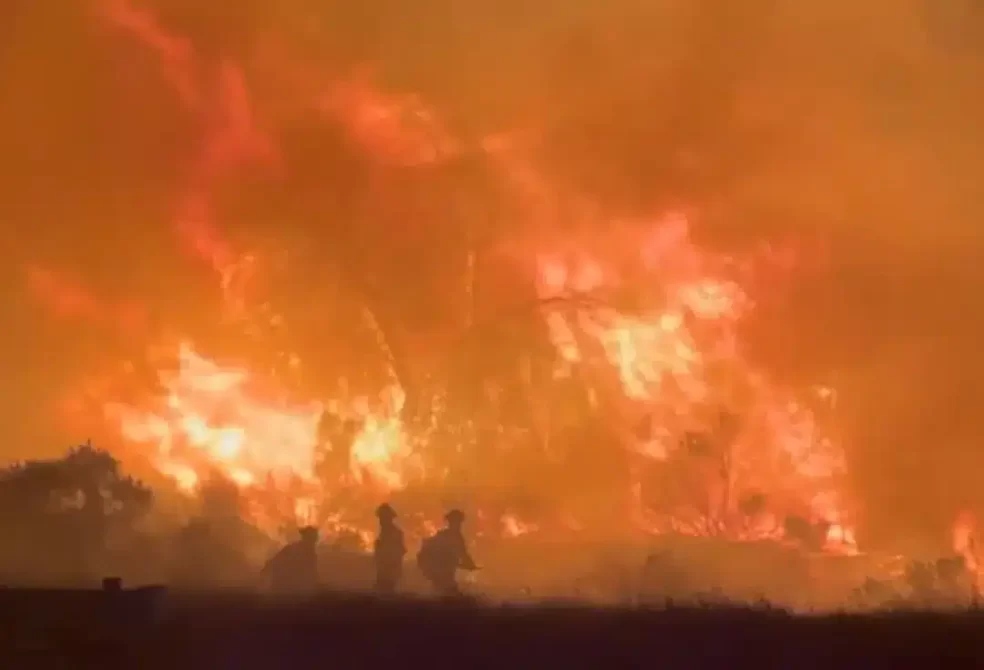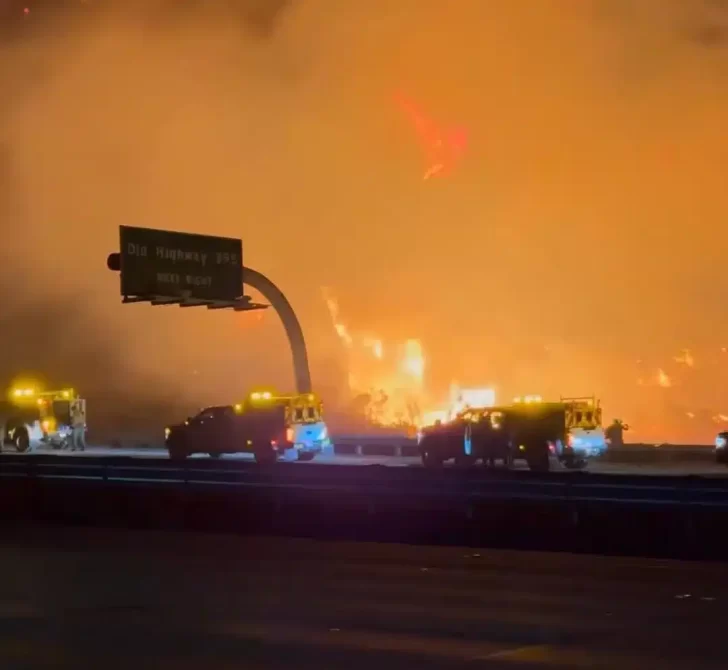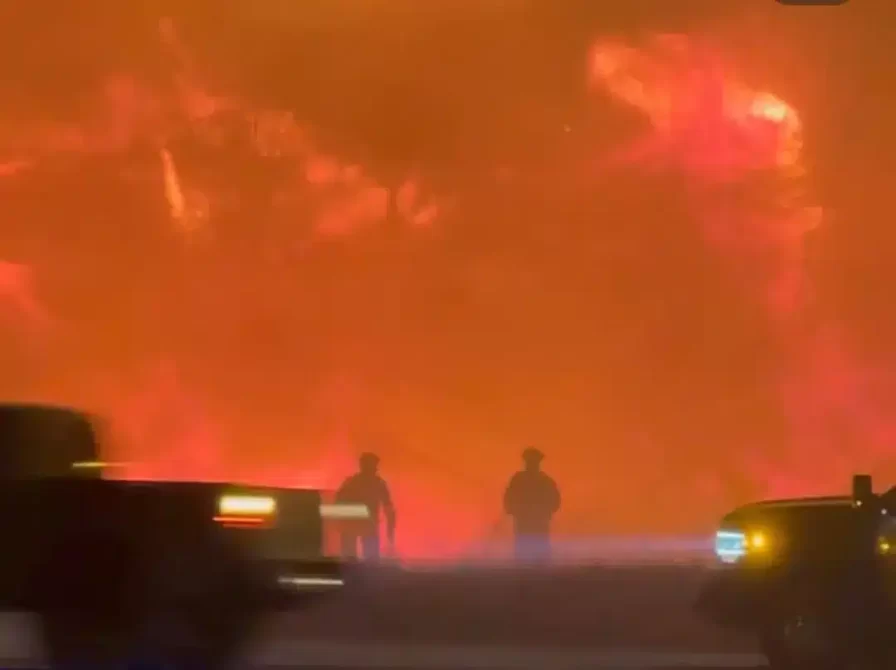
In the wake of the recent Palisades, LA, and Malibu fires, another wildfire started in parts of Southern California on Tuesday, throwing San Diego County into chaos as high winds and dangerously dry conditions fanned the flames. The Lilac fire ignited overnight, prompting evacuations, school closures, and widespread power outages.
This has signaled more troubles for Los Angeles County after the Palisades and Eaton fires, as the officials worked tirelessly to contain deadly flames in the region following the human displacement and destruction of properties.
The Lilac Fire has consumed 80 acres, displacing 86 residents
View this post on Instagram
The Lilac Fire is the largest wildfire in northern San Diego County, and it ignited in Bonsall, about 45 minutes north of downtown San Diego. According to county officials, the San Diego fire grew to 80 acres by early morning and displaced 86 residents. Two structures sustained damage as firefighters worked against relentless winds and dry conditions to establish control. By 8 a.m. on Tuesday, the Lilac Fire was 10% contained. A San Diego County supervisor, Jim Desmond, urged residents to remain alert in a social media post, “Our first responders are working tirelessly to protect lives and property. Stay prepared to leave if necessary.”

The neighboring Pala Fire burned 17 acres north of Pala Mesa before firefighters contained it. Evacuation orders tied to this fire were lifted early Tuesday. Meanwhile, the Riverview Fire burned one acre and was swiftly contained. The Lilac fires started as hurricane-force Santa Ana winds blew across Southern California. The National Weather Service recorded wind gusts of 102 mph in San Diego’s mountains late Monday, with widespread gusts of 70 to 90 mph reported in the region.
Here is a report from the National Weather Service:
- Sill Hill, San Diego County – 102 mph
- Keen Ridge, Riverside County – 81 mph
- Banning, Riverside County – 83 mph
- Hauser Mountain, San Diego County – 77 mph
- Chino Hills, Orange County – 71 mph
- California State University, San Bernardino – 60 mph

The weather forecasters have issued red flag warnings for San Diego County to caution the residents that any fire ignition could lead to rapid spread due to the powerful winds and humidity levels. “THIS IS A PARTICULARLY DANGEROUS SITUATION,” the National Weather Service in Los Angeles warned. “POWERFUL DAMAGING WINDS EXPECTED!”
Fire crews make efforts to contain other San Diego fires

The impacts of the Lilac fire and other San Diego fires are rippling across several communities as thousands of residents woke up without power as high winds and fire activity strained the region’s electrical grid. By Tuesday morning, nearly 50 percent of the 97,000 outages reported statewide were concentrated in San Diego and neighboring Riverside County. Local school districts like Bonsall Unified and Julian Union also canceled classes as a precaution, and the officials cited the combined threats of fire danger, high winds, and power outages as reasons for the closures, disrupting the routines of students and families. Meanwhile, firefighters have made efforts to contain the Lilac fire, and the conditions are improving gradually.
Cal Fire reported that crews were gaining ground, with the fire’s forward spread halted by mid-morning Tuesday. “Firefighters are making good progress,” Cal Fire shared in its latest update and noted that reduced fire activity allowed responders to focus on containment and protecting threatened areas.

While containment efforts showed promise in San Diego County, neighboring Los Angeles County faced a graver situation. The Palisades Fire burned over 23,000 acres ,and the Eaton Fire burned 14,000 acres, continuing to threaten communities. Altogether, the two fires had already destroyed over 15,000 structures and claimed 27 lives. As winds continued to batter the region, forecasters warned that the conditions could worsen. A National Weather Service statement described the situation as “particularly dangerous,” urging residents to remain vigilant and prepared for potential evacuations.
